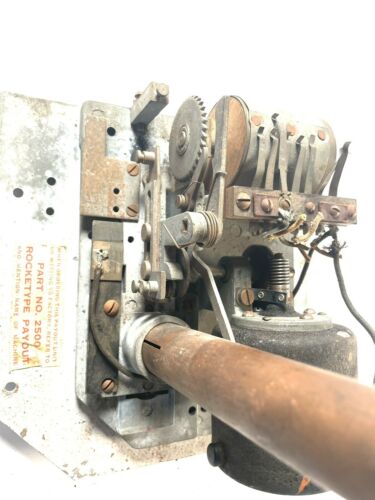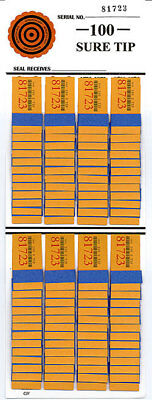-40%
Antique/VTG Bally Rocket Pinball Machine Payout Nickel Dispenser. Early 1930’s
$ 237.6
- Description
- Size Guide
Description
Antique/VTG Bally Rocket Pinball Machine Payout Nickel Dispenser. Early 1930’sWorks. As picked, not cleaned, oiled or mutilated. Tested operation at 6VDC and it dispensed nickels just fine, but will need a little oiling. The mechanism is mounted on a 8”X8” aluminum plate. I believe the motor is EMC. Beautiful condition.
In 1933, at around the same time as Harry Williams was working on his first pingame using electricity to provide playfield "action", Bally came out with a new type of pingame which was to have a major impact on the pinball industry and result in much legal controversy for many years to come. This game was called ROCKET and it used electricity (from "dry cell" batteries) to power a mechanism which paid out coins directly to the player if he shot a ball into the proper holes on the playfield.
At that point pingame design began to split in two directions, "payouts", and "novelty" games. Many manufacturers including Bally, Gottlieb, Western Equipment and Supply, Keeney, and the slot machine firms Mills and Jennings, began to put out a good many payout pinballs in the Thirties, in addition to their "novelty" games. Payout pinballs were indeed a big business in those years. Other pingame manufacturers, such as Genco (I dont believe I have ever heard of a Genco payout pingame), Exhibit supply, and Chicago Coin made relatively few payouts, sticking more with the "novelty" games. Many of the payout games only offered the player one ball per game and became known as "one- balls".
This new type of pingame, the "payout", opened up new opportunities for the coin machine operators in the mid 1930s. The bell slot machine was a popular money- maker for operators of that period in areas where they were either legal or "tolerated". The payout pinball gave the slot machine operator another type of game to operate in those areas, probably bringing in some new players who wanted to gamble but felt that the slots were too 'fixed' in the operator's favor. These people probably thought "at least with these pingames I have a chance to use my skill to increase my chances of winning."
Secondly, operators could, in some cases, operate payout pins in areas where slots were not tolerated but where pinballs, with their "skill" features, could get by under the local ordinances, at least until these laws were tested in the courts. So this opened up new "gambling territories" for some operators, at least for the time being. In other areas, with stricter anti- gambling laws, the non-payout "novelty" pins had to be operated exclusively.
An "off-shoot" of the "payouts" were the "ticket venders" which dispensed tickets (in place of coins) to the winners. These could be used in some territories where cash payouts were strictly forbidden by redeeming the tickets for prizes of merchandise. In many cases though these tickets were redeemed for cash "under the table".
A few payout pins even had "mint venders" attached, in the same manner as many slot machines of the day, in an attempt to get around anti-gambling laws by claiming that the player was paying for merchandise, and that the playing of the game, with it's possible monitory award, was only "secondary". This idea had been used many times in the past with other gambling machines, even around the "Turn Of The Century" when music boxes were added to "upright" slot machines.



















